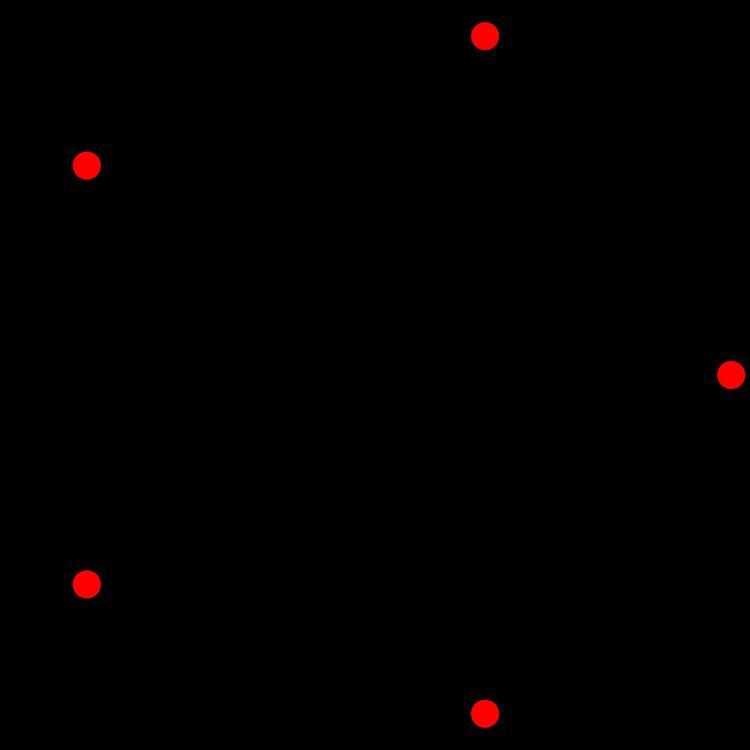 | ||
In four-dimensional geometry, a cantellated 5-cell is a convex uniform 4-polytope, being a cantellation (a 2nd order truncation, up to edge-planing) of the regular 5-cell.
Contents
- Cantellated 5 cell
- Alternate names
- Coordinates
- Cantitruncated 5 cell
- Alternative names
- Cartesian coordinates
- Related 4 polytopes
- References
There are 2 unique degrees of runcinations of the 5-cell including with permutations truncations.
Cantellated 5-cell
The cantellated 5-cell or small rhombated pentachroron is a uniform 4-polytope. It has 30 vertices, 90 edges, 80 faces, and 20 cells. The cells are 5 cuboctahedra, 5 octahedra, and 10 triangular prisms. Each vertex is surrounded by 2 cuboctahedra, 2 triangular prisms, and 1 octahedron; the vertex figure is a nonuniform triangular prism.
Alternate names
Coordinates
The Cartesian coordinates of the vertices of the origin-centered cantellated 5-cell having edge length 2 are:
The vertices of the cantellated 5-cell can be most simply positioned in 5-space as permutations of:
(0,0,1,1,2)This construction is from the positive orthant facet of the cantellated 5-orthoplex.
Cantitruncated 5-cell
The cantitruncated 5-cell or great rhombated pentachoron is a uniform 4-polytope. It is composed of 60 vertices, 120 edges, 80 faces, and 20 cells. The cells are: 5 truncated octahedra, 10 triangular prisms, and 5 truncated tetrahedra. Each vertex is surrounded by 2 truncated octahedra, one triangular prism, and one truncated tetrahedron.
Alternative names
Cartesian coordinates
The Cartesian coordinates of an origin-centered cantitruncated 5-cell having edge length 2 are:
These vertices can be more simply constructed on a hyperplane in 5-space, as the permutations of:
(0,0,1,2,3)This construction is from the positive orthant facet of the cantitruncated 5-orthoplex.
Related 4-polytopes
These polytopes are art of a set of 9 Uniform 4-polytopes constructed from the [3,3,3] Coxeter group.
